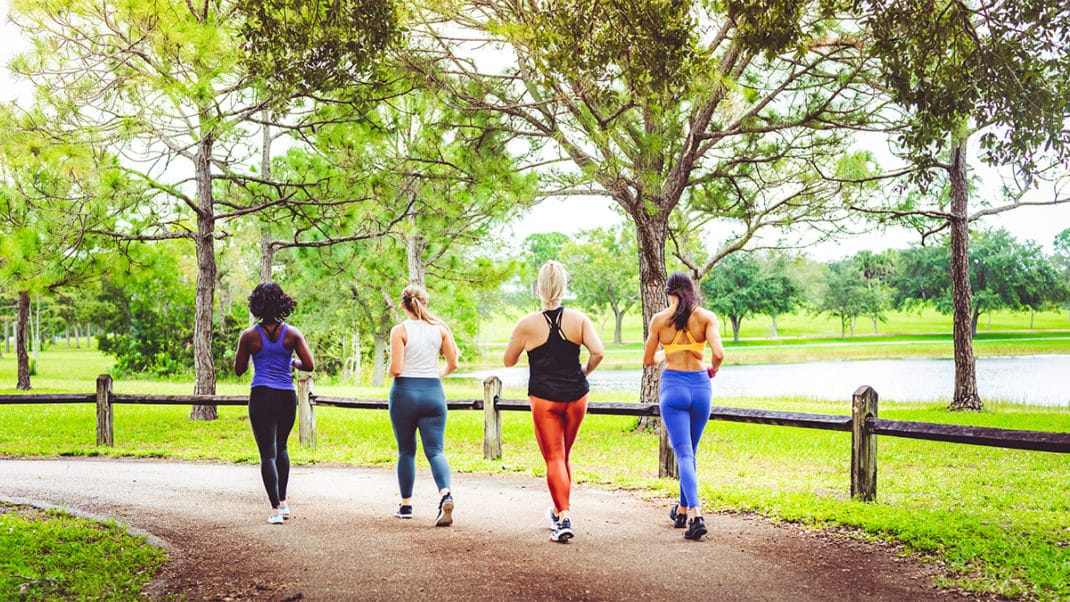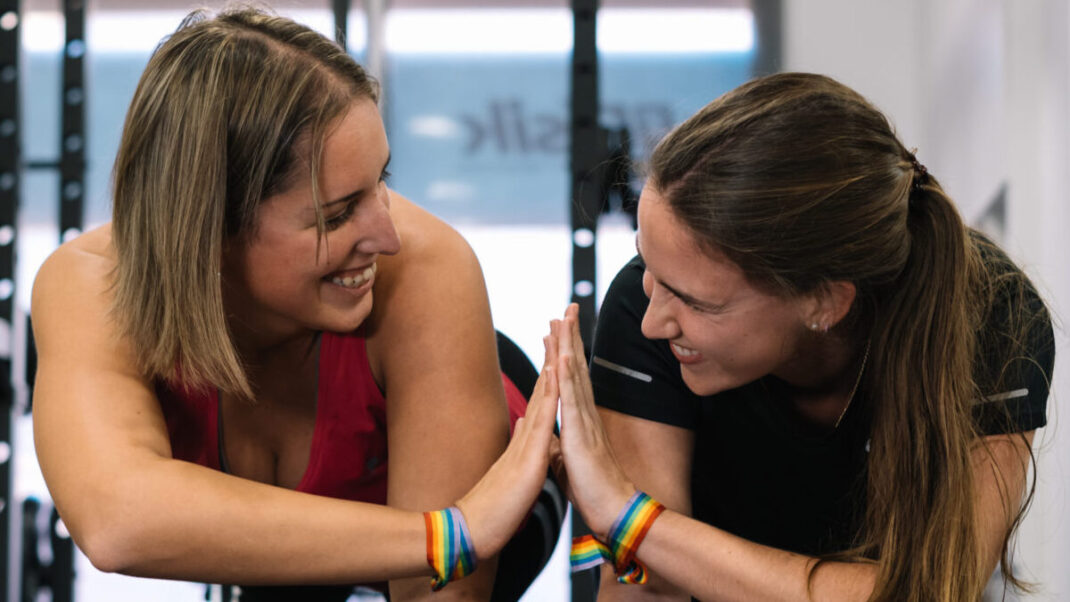The Science of Water: Nature’s Most Important Nutrient
Was your mother right when she told you to drink lots of water before going out to play?

Water is colorless, tasteless and odorless. Because of its numerous and diverse functions in the body, it is often regarded as the most important nutrient. Most people can survive no more than 7 days without water (Williams 2005). Although there is rigorous proof of its benefits, scientists still have trouble objectively advising people how much they need to drink daily to maintain favorable health. This article will plunge in for a look at this mysterious nutrient called H2O.
Water is the most abundant constituent of the body, accounting for 50%–60% of its mass. It is an inorganic (carbonless) substance composed of two hydrogen atoms (H2) bonded to one oxygen atom (O). Water is intricately involved in numerous functions of the body (see Figure 1), including the transport of oxygen, nutrients and waste products into and out of the cells. Drinking water contains several electrolytes (substances in solution that conduct an electric current), including calcium, chloride, fluoride, magnesium, potassium and sodium. Water is necessary for all digestion and absorption functions, and it lubricates mucous membranes in the gastrointestinal and respiratory tracts.
Even though it contains no calories, water is the medium for most chemical reactions in the body, especially those metabolic reactions involved in energy production. The body uses water as a coolant, helping to regulate body temperature during exercise, when fever is present and in hot environments. Water also serves as a cushioning component between joints, in the spinal cord and in the brain.
Water is stored in either intracellular (inside the cell) fluid (ICF) or extracellular (outside the cell) fluid (ECF) compartments. The ICF accounts for about 65% of the body’s water, while the ECF (35%) is made up of blood plasma and lymph (a transparent, slightly yellow fluid that carries lymphocytes), which serve as the transport medium for wastes and nutrients throughout the body.
Minerals such as chloride, potassium and sodium participate in the maintenance of ICF and ECF levels; a process governed by hormonal messages from the brain and the kidneys. If any molecule becomes too concentrated in one fluid compartment, it will pull water from the other compartment to dilute itself. For instance, eating pizza often makes a person thirsty because the sodium from the sauce, cheese and meats accumulates in the ECF, pulling water from the ICF. Cell sensors detect this change and signal the brain that cells are dehydrating. The brain (specifically the hypothalamus) sends a signal to drink more water.
So, whenever any minerals or molecules become too concentrated in either the ICF or ECF, the brain will signal the body to drink more water until that compartment is appropriately diluted for homeostasis (maintenance of the body’s internal environment). If more fluid is present at the cells than is desired, the kidneys proceed to make urine by filtering the excess fluid from the blood.
Glasses of Water a Day” Myth
For clarity, eight 8-ounce glasses is equal to 1,893 milliliters (ml), or 2 quarts, or half a gallon, or approximately 1.9 liters. Most fitness and health professionals for years have encouraged clients to drink eight 8-ounce glasses of water a day. Surprisingly, no scientific evidence can be found that supports this “8 x 8” recommendation.
In a superbly researched and written review, Heinz Valtin (2002) traces the origin of this recommendation to two possible sources. One source is an “unreferenced” excerpt within a text (Nutrition for Good Health) authored by Drs. Fredrick Stare and Margaret McWilliams in 1974, which recommends around six to eight glasses (of water, coffee, tea, milk, etc.). However, Valtin highlights a much earlier origin in 1945 by the Food and Nutrition Board of the National Research Council, which states “a suitable allowance of water for adults is 2.5 liters (which is approximately eight 8-ounce glasses) daily in most instances . . .”
The Institute of Medicine (IOM) published its Dietary Reference Intake for water in February 2004. This scientific committee established an adequate intake (AI) for total water to prevent the harmful (chiefly acute) effects of dehydration. Every day, close to a liter of water is lost from breathing, perspiring and bowel movements. Also, the average urine output for adults is up to 1.5 liters a day. Consequently, the IOM AI (for total water) for sedentary men and women (19–50 years) is 3.7 liters and 2.7 liters per day, respectively.
The committee explains that drinking fluids represents about 81% of total water intake with 19% of water being provided by foods. So, the AI recommendation for actual fluid intake is 3.0 liters for men and 2.2 liters for women. Since 1 liter = 33.8 fluid ounces, men are advised to drink 101.4 fluid ounces, or 13 cups (a cup is 8 fluid ounces) of beverages and drinking water per day, and women are advised to drink 74.4 fluid ounces, or 9 cups, per day. For girls 14–18 years, the AI is 2.3 liters per day (77.7 ounces, or 9.5 cups); and for boys 14–18 years, it is 2.4 liters per day (81.1 ounces, or 10 cups).
Kidney Stones. Portis and Sundaram (2001) summarize several factors that may contribute to kidney stone formation, including age, gender, race, climate and medications. They also state that the most important factor influencing kidney stone formation is decreased fluid intake. To help prevent kidney stones, Hughes and Norman (1992) recommend moderation in the intake of calcium, oxalate (beverages such as beer, chocolate milk, teas and fruit juices), protein, sodium and alcohol, while increasing the intake of water and fiber.
Cancer of the Bladder and Lower Urinary Tract. The causes of bladder cancer include cigarette smoking and occupational exposure to aromatic amines (air contaminated by wild fires or coal tar). However, it has also been clearly established that decreased water consumption is associated with bladder and lower-urinary-tract cancer (Altieri, La Vecchia & Negri 2003). Altieri and colleagues theorize that a decreased fluid intake results in a greater concentration of carcinogens in the urine and/or prolonged contact with bladder mucous membranes.
Colorectal Cancer. Colorectal cancer is cancer that develops in either the colon or the rectum. From the small intestine, partly digested food enters the colon (the first 5 feet of the large intestine), which removes water and nutrients from the food and turns the rest into waste. The waste then passes from the colon into the rectum (the last 6 inches of the large intestine) and then out of the body. Researchers have theorized that low fluid intake (in conjunction with the fact that we excrete about 80–200 ml of water a day in waste) may raise the risk of colorectal cancer by lengthening bowel transit time, thus increasing the contact of carcinogens within mucous membranes in the colon and rectum (Altieri, La Vecchia & Negri 2003).
Breast Cancer. Any association between fluid intake and breast cancer remains uncertain at this time. More research is needed to establish whether an association exists.
Clinical Health. From a clinical point of view, any health-
related body water deficit (e.g., from diarrhea, vomiting or climatic stress) that challenges the ability of the body to maintain homeostasis can negatively impact physiological function and health, particularly if these conditions persist for ≥ 24 hours.
The research on hydration and mental performance is in its formative years, although the science is clear that decrements in visuomotor (visual perception by the brain), psychomotor and cognitive performance can occur when 2% or more of body weight is lost because of water restriction, heat or physical exertion (Grandjean & Grandjean 2007).
According to Murray (2007) the literature discussing physical performance and hydration began in the late 1800s. Murray summarizes that a drop in body water levels to below normal can reduce motivation and effort, cardiovascular function (see Figure 2), metabolic reactions and thermoregulatory control mechanisms. Water depletion exceeding 2% of body weight (as little as 3 pounds of water in a 150-pound athlete) can provoke these negative consequences. Such deleterious physiological events are more severe in warm environments.
The initial signs of dehydration may include lightheadedness, headache, loss of appetite, flushed skin, dry and sticky mouth,
fatigue, dry eyes, muscle weakness, burning sensation in the stomach, and dark urine with a strong odor (Kleiner 1999). As dehydration worsens, Kleiner states, symptoms may include difficulty swallowing, clumsiness, sunken eyes, dim vision, numbness of the skin, and muscle spasms. The one effective treatment for dehydration is to replace lost fluids with cool water. Sports drinks containing electrolytes and a carbohydrate solution may also help.
The three heat syndromes related to dehydration are heat cramps, exhaustion and stroke. Heat cramps are painful, brief muscle cramps that occur during exercise or work in a hot environment. Heat cramps usually affect calves, thighs, abdomen and shoulders when they become fatigued by heavy exertion. Kleiner (1999) theorizes that the cramping is most likely due to high sweat rates and dehydration disrupting the sodium and potassium ICF and ECF balance. The treatment is to gradually cool down, rest and drink an electrolyte-containing beverage while gently massaging and stretching the affected muscle groups. Medical assistance should be sought if the cramps continue for an hour.
With heat exhaustion a person may go into hypovolemic shock (a state of decreased blood plasma and volume characterized by pale, cool, clammy skin with a rapid heart rate and shallow breathing) and have some of the following symptoms—low or undetectable blood pressure, nausea, heavy sweating, low-grade fever, headache and diminished consciousness.
A person suffering from heat exhaustion should be put into a supine position, with legs and feet slightly elevated, in a shady or air-conditioned location. He or she should drink cool water and be cooled by spray, sponge or fanning. Heat exhaustion can quickly lead to heat stroke. Medical assistance should be sought if the symptoms worsen.
Heat stroke is an escalation of heat cramps and heat exhaustion. It is a life-threatening condition occurring when body temperature is 104 degrees Fahrenheit (40 degrees Celsius) or higher. Sweating often stops, and the pulse rate may increase to about 130 beats per minute or higher (known as a sinus tachycardia). Seizures, lack of consciousness or hallucination may also occur, and weak muscles may become either more rigid or limp. Immediate medical intervention is needed to prevent brain damage, organ failure and/or loss of life.
and Endurance Exercise
Inappropriate hydration during exercise is a chief contributing factor to poor performance during endurance events, particularly in hot and humid conditions. The American College of Sports Medicine (ACSM) recently released its newest Position Stand on exercise and fluid replacement in an effort to guide exercisers toward safe and enjoyable participation in endurance exercise (Sawka et al. 2007). In its stand, the ACSM emphasizes three key points: prehydrating before exercise, hydrating during exercise and rehydrating after exercise.
Prehydrating. This is to make certain that any fluid and electrolyte insufficiency is corrected prior to starting the cardiovascular exercise bout. Hydrating can begin about 4 hours before the workout session and continue progressively. About 5–7 ml per kilogram (kg) of body weight (1 kg = 2.2 pounds) should be sufficient. So, if a person weighs 150 pounds, that weight is 68 kg; therefore 7 ml/kg x 68 = 476 milliliters of fluid. Since 8 ounces is equivalent to 237 ml, 476 ml is about 16 ounces, or two glasses of water. Consuming some sodium-containing foods or snacks with the two glasses of water may help retain the fluid. A beverage with very light sodium (20–50 mEq [milliequivalents] per liter or 460–1,150 milligrams [mg] per liter) would also suffice.
Hydrating. The hydration goal during exercise is to prevent excessive water loss and disparities in electrolyte balance in the working muscle cells. The recommendations can be quite variable, depending on sweat rate, mode of exercise, exercise duration, weather conditions, hydration opportunities, training status, heat acclimatization and exercise intensity. Because of this, ACSM recommends following a customized hydration strategy that includes periodic hydration segments during the workout.
Sawka and colleagues (2007) clarify that balancing electrolyte and water deficits during prolonged (≥ 3 hours) exercise is difficult, and exercisers are encouraged to monitor their pre- and post-workout body weights and try to match the weight loss (via sweat) with fluid replacement during the session. To sustain
endurance exercise performance ≥ 1 hour, carbohydrate consumption (with a mixture of sugars, such as glucose, fructose, maltodextrin and sucrose) may be beneficial. Carbohydrate consumption at a rate of ~30–60 grams per hour has been found quite effective in maintaining glucose levels for continuous aerobic performance beyond 1 hour (Sawka et al. 2007).
These researchers add that the carbohydrate concentration should be up to 8%, and not beyond, because a higher concentration may impede gastric (stomach) emptying. Electrolyte needs during prolonged exercise are best replenished with fluids containing ~20–30 mEq per liter (460–690 mg per liter) of sodium and ~2–5 mEq per liter (80–200 mg per liter) potassium.
Rehydrating. After exercise, the goal is to replenish any fluid or electrolyte shortfall. Sawka and colleagues (2007) suggest a resumption of normal meals and snacks (that contain adequate sodium) with sufficient water to restore sodium levels in the body. The authors state that sodium losses are quite different from person to person and are difficult to assess, but a variety of food choices will supply the depleted electrolytes. Last, the body’s cells absorb postexercise fluids best when they are ingested gradually, as opposed to in single large amounts. As a general rule, for each kg (2.2 pounds) of weight difference pre- to post-exercise, the body will need about 1.5 liters of fluid (Sawka et al. 2007). Converting kilograms to pounds, for each pound of sweat lost in exercise, about 25 ounces of fluid must be drunk after exercise.
Water is the most omnipresent substance on our planet. We could not exist without it. The unique properties of water place limits on our physiology and anatomy while simultaneously providing the opportunities for physical activity, exercise and life. We know a great deal about this substance we depend on, yet there is still so much more to learn about the mysterious molecule we call H2O.
Regulates body temperature
Carries oxygen and nutrients to cells
Lubricates joints and protects spinal cord
Flushes out waste products through kidneys and liver
Serves as the medium for all energy reactions in the body
Cushions organs and tissues
Promotes digestion and helps prevent constipation
Transports minerals throughout cells of the body
Decrease in cardiac output
Decrease in heart filling
Decrease in skin blood flow
Increase in heart rate
Decrease in blood volume
Decrease in blood plasma osmolality
Decrease in stroke volume
Increase in blood viscosity
Decrease in plasma volume
Sidebar: Hydration Terms
Electrolyte. A substance in solution that can conduct an electric current. Electrolytes in the human body include calcium, chloride, fluoride, magnesium, potassium and sodium.
Euhydration. A normal state of body water content, also called normohydration.
Dehydration. The loss of water (due to exercise, illness, environment, medications or fluid deprivation) and salts essential for normal bodily function.
Hydration. The supply of water to restore or maintain fluid balance.
Hyperhydration. A state of excess fluids in the body, also called overhydration.
Hyperthermia. An acute condition that occurs when the body produces or absorbs more heat than it can dissipate.
Hypohydration. The removal of water from the body.
Hyponatremia. An abnormally low concentration of sodium in the blood. Too little sodium can cause cells to malfunction, and extremely low sodium can be fatal.
Hypovolemic Shock. A state of decreased blood plasma and volume, characterized by pale, cool, clammy skin with a rapid heart rate and shallow breathing. Also called physical collapse.
Osmolality. A measure of the amount or concentration of dissolved substances (known as solute) in a solution.
Osmosis. Diffusion of fluid through a semipermeable membrane from a solution with a low solute concentration to a solution with a higher solute concentration until there is an equal concentration of fluid on both sides of the membrane.
Sidebar: 15 Frequently Asked Questions
- Why do you need to drink more water with air travel?
The recirculated air on airplanes has less moisture, and the travel time at high altitudes also increases water loss through evaporation. As a general guide, drink one 8-ounce glass of water or juice for each hour of flying time. - Why do men have a higher percentage of water in their bodies than women?
Men have a slightly higher percentage of muscle mass, and muscle is composed of about 75% water. - Why does my sweat vary on workouts during the week?
The total “rate” of sweating, as well as the total “sweat loss,” can be markedly different from day to day owing to differences in the environment (heat and humidity), exercise intensity, exercise duration, mode of exercise and type of clothing (water absorbency). - How much water can be lost in an hour of exercise?
During light exercise in a cool or moderate environment, the sweat rate might be as little as 100 ml per hour, which is about 3.4 ounces. However, during vigorous exercise in a hot environment, the sweat loss can be more than 3,000 ml per hour, which is about 100 ounces (Murray 2007). - How does age affect hydration?
With age, thirst becomes a less effective indicator of the body’s fluid needs, so older adults who rely solely on thirst signals increase their risk of becoming dehydrated. Seniors who relocate to places where the weather is warmer or dryer are also more susceptible to dehydration. Dehydration in children usually results from losing large amounts of fluid (as from play) and not drinking enough water to replace the loss. Infants can become dehydrated only hours after becoming ill. Dehydration is a major cause of infant illness and death throughout the world. - Physiologically, why don’t colder environments impair physiological function as much as hot environments?
There is performance impairment associated with colder environments. However, dehydration is not as deleterious, because cardiac output (heart rate x stroke volume) is higher in colder environments, whereas core temperature is lower (Murray 2007). - How can you determine sweat rate?
To determine sweat rate, measure body weight before and after exercise (without clothes), amount of fluid consumed during exercise and amount of urine excreted (if any) during exercise. Follow the example below to calculate sweat rate (Williams 2005):- pre-exercise body weight: 130 lb
- postexercise body weight: 126.5 lb
- change in body weight: -3.5 (or 56 oz)
- drink volume: 16 oz
- urine volume: 0 oz
- sweat loss (c+d-e): 72 oz
- exercise time: 45 minutes
- sweat (f/g): 72 oz/45 min= 1.67 oz/minute
Sweat rate varies from person to person because of body weight differences, genetic factors, heat acclimation ability and metabolic (energy production) efficiency (Sawka et al. 2007).
- Explain the different types of water, including herbal, vitamin, purified, spring, mineral and artesian.
- Herbal water features flavors derived from herbs touted as having health benefits associated with antioxidants.
- Vitamin water is fortified with various vitamins and other additives, including a calorie-adding sweetener.
- Purified water is usually produced by some type of distillation process.
- Spring water flows naturally from an underground source.
- Mineral water comes from a protected underground source and must contain some minerals.
- Artesian water is drawn from a well that taps a confined aquifer (underground layer of water-permeable rock, sand, clay or silt).
- What is the composition of sweat?
Although this varies between people, sweat is approximately 99% water, and the rest consists of the electrolytes sodium and chloride plus tiny amounts of calcium, potassium, magnesium, iron, zinc, copper and some water-soluble vitamins (Williams 2005). - Is there an easy way to monitor whether water intake is sufficient?
As a general rule, urine color is a good “marker” of water intake. Normal urine should be clear to amber (light yellow) in color. It is often more yellow in those taking vitamins and some medications. Dark-yellow urine or a lower output (than usual) can indicate dehydration. Drinking too much water can lead to “water intoxication.” However, this occurs only rarely in healthy persons, because the kidneys can produce a large quantity of urine in a brief time period to correct imbalances. - Will drinking water help with weight loss?
There is some evidence for men and women that water intake with a meal may help promote satiety and take the edge off hunger (Valtin 2002). Water has no caloric value and when substituted for sweetened (usually with high-fructose corn syrup or sucrose), higher-calorie beverages, it provides a positive modification. - Why do some athletes wet their bodies during endurance competitions?
Sponging the head and torso with cold water or a water spray is a skin-wetting technique. Although perceived to be performance enhancing, this practice has not been shown to reduce core temperature or improve cardiovascular performance. - Do women who are pregnant or breast-feeding need to drink more water?
Yes, expectant mothers and those who are breast-feeding need additional fluids daily to stay hydrated. Women at risk of gaining too much weight are encouraged to consume more water (no calories) and limit their consumption of sweetened fluids (with calories). - What is hyponatremia?
Hyponatremia (“natremia” comes from the Latin word for sodium) is a condition in which the blood’s sodium levels are subnormal. This may occur in prolonged cardiovascular events, such as a marathon. Symptoms include vomiting, headache, bloating, swollen feet and hands, disorientation, undue fatigue and wheezy breathing. Fluid intake overload is the main cause of exercise-induced hyponatremia. An excessive loss of total-body sodium is another cause or contributing reason. Medical intervention is necessary in order to clearly discern whether symptoms are from a heat disorder or hyponatremia. - Does the body absorb cold water faster than warm?
No. Cold water is absorbed more slowly than cool or lukewarm water (which are also more soothing).
References
Grandjean, A.C., & Grandjean, N.R. 2007. Dehydration and cognitive performance. Journal of the American College of Nutrition, 26, 549S–54S.
Hughes, J., & Norman, R.W. 1992. Diet and calcium stores. Canadian Medical Association Journal, 146 (2), 137–43.
Institute of Medicine. 2004. Executive Summary, Dietary Reference Intakes for Water, Potassium, Sodium, Chloride, and Sulfate. National Academy of Sciences, Food and Nutrition Board. Washington, DC: National Academy Press.
Kleiner, S.M. 1999. Water: An essential but overlooked nutrient. Journal of the American Dietetic Association, 99, 200–206.
Murray, B. 2007. Hydration and physical performance. Journal of the American College of Nutrition, 26 (5), 542S–48S.
Portis, A.J., & Sundaram, C. P. 2001. Diagnosis and initial management of kidney stones. American Family Physician, 63 (7), 1329–1338.
Sawka, M.N., et al. 2007. American College of Sports Medicine Position Stand: Exercise and fluid replacement. Medicine & Science in Sports & Exercise, 39, 377–90.
Valtin, H. 2002. “Drink at least eight glasses of water a day.” Really? Is there scientific
evidence for “8 x 8”? American Journal of Physiology—Regulatory, Integrative and Comparative Physiology, 283, 993–1004.
Williams, M.H. 2005. Nutrition for Health, Fitness & Sport (7th ed.). Boston: McGraw-Hill Higher Education.
Len Kravitz, PhD
Len Kravitz, PhD is a professor and program coordinator of exercise science at the University of New Mexico where he recently received the Presidential Award of Distinction and the Outstanding Teacher of the Year award. In addition to being a 2016 inductee into the National Fitness Hall of Fame, Dr. Kravitz was awarded the Fitness Educator of the Year by the American Council on Exercise. Just recently, ACSM honored him with writing the 'Paper of the Year' for the ACSM Health and Fitness Journal.






